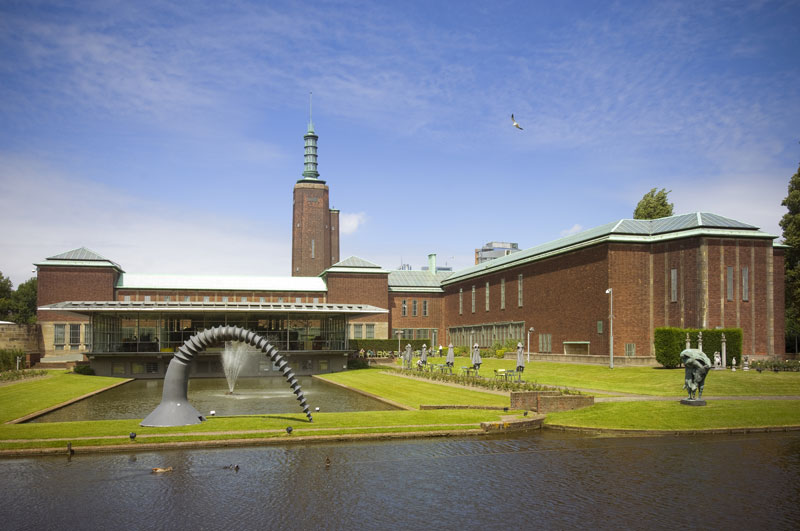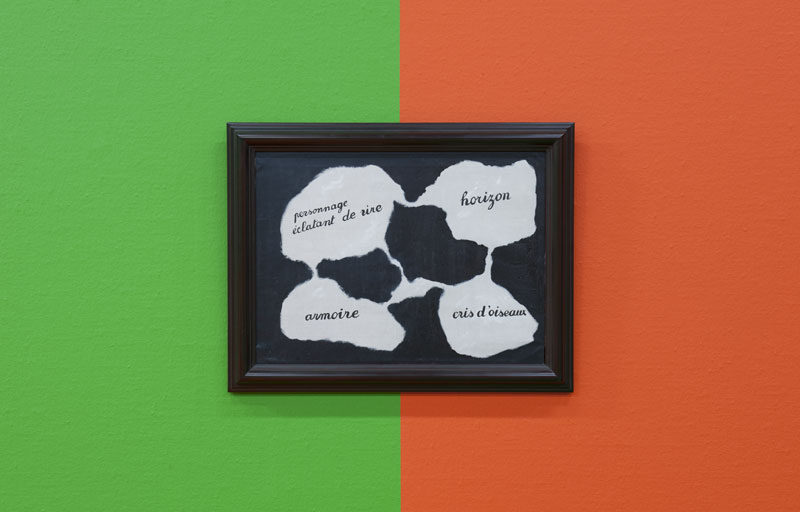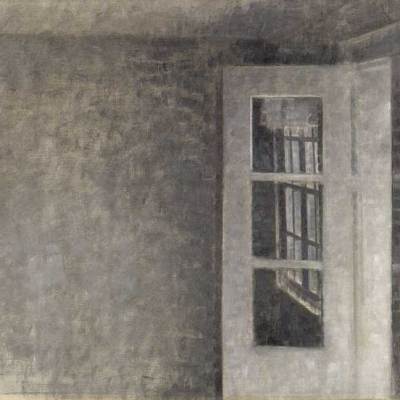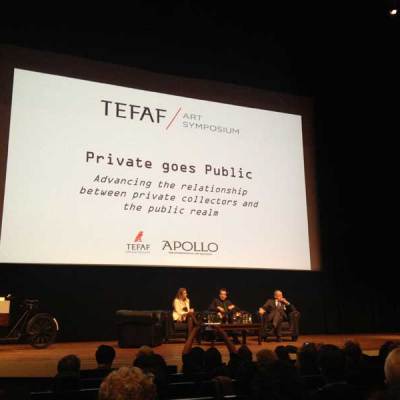From late 2018, visitors approaching the Museum Boijmans Van Beuningen in Rotterdam through the city’s Museumpark will encounter a colossal silver bowl, some 40 metres high and with foliage cresting its brim. An alien structure, it will have a mirrored façade that throws back a panoramic reflection of the urban skyline – intimating just how integral the building is to the city, but giving little clue as to what it might harbour. Venturing inside, visitors will find themselves in a tall, narrow atrium, its walls lined with paintings reaching up over several storeys, and with stairways zigzagging across it. It will look like a salon hang that has been reimagined by M.C. Escher.
This is the Collectiegebouw, or Public Art Depot, a building that will provide open-access storage for a museum which numbers some 145,000 objects in its collection, but currently only has space to display around eight per cent of its holdings. (Admittedly, that includes more than 80,000 works on paper, stored in a publicly accessible print room that opened in 2008.) The punchy design is the work of Rotterdam-based architects MVRDV, best known for the city’s new Markthal, another bold building that sees an apartment block bowed over to form an arch, creating a cavernous covered market. When I visit the museum in mid January, it is only two months since the City Council granted approval for the Depot, and as he discusses it, the museum’s affable director Sjarel Ex still sounds a note of elation that the project is to go ahead. ‘It took me about three weeks to imagine what it meant,’ he tells me.
What it does mean, in the first place, is that the Museum Boijmans Van Beuningen will offer visitors access to those activities and areas that are fundamental to collection care and management, but which to date have not generally been considered part of the public spectacle of museum-going. As well as simply showing more artworks – ‘You’ll be able see the animals before the circus,’ jokes Ex – the building will put storage, art handling, and conservation themselves on display. From the atrium, windows will give on to conservation facilities and repositories, which will be fully accessible on guided tours of the building, while an educational space will allow for interaction between museum specialists and visitors. ‘We want to give to the backstage activities a kind of public responsibility that becomes a value.’
Indeed, the Public Art Depot project puts the Museum Boijmans Van Beuningen in the vanguard of those international institutions exploring how better to educate visitors about the responsibilities of a museum towards the objects in its care. ‘I have an optimism about what a museum can be, and how that could develop,’ says Ex. ‘This could be a model for colleagues looking to show their objects in storage’ – and he adds that peers in London, Frankfurt and elsewhere have been following the project closely. As with the Victoria and Albert Museum’s plan to construct a new storage facility in East London as a destination in its own right, so the Public Art Depot has been promoted as a way of validating the rich cultural value of a far-reaching, and still growing collection, and of attesting to the effort and resources that are required to guarantee its future. ‘You are your own curator here,’ says Ex, ‘and you can find out what taking care of heritage means.’
For all that the Public Art Depot reflects a trend in museology, for Ex its realisation will solve a problem that he first identified on taking up the directorship here in 2004. Sounding out his new colleagues, it quickly became apparent that the museum’s storage facilities were inadequate, and worse, that objects were at serious risk of flood damage. But – in typical Dutch fashion, some might say – the project developed not only out of this operational necessity, but through an innovative sense of enterprise. Ex had realised that private collectors, too, were often faced with a predicament in which they were accumulating more art than they could ever display: ‘I went to the office of one architect in the Netherlands in the ’90s, and works by Marlene Dumas and René Daniëls […] were still in their plastic, all over the office. The cellar was so full that art piled out and nobody could enter it.’ It was a problem exacerbated by the scale of much post-war and contemporary art.
The museum saw an opportunity for an unprecedented type of public-private partnership, whereby private collectors would be able to rent storage space in its Public Art Depot, and even mount exhibitions in its display areas; the museum, meanwhile, would be able to cultivate those collectors, carrying out such groundwork as might eventually lead to donations or bequests. Collectors would have to commit to storing their collection in the building for at least five years.
In the MVRDV-designed building, around 10 per cent, or 1,600 square metres of the space is to be let to private collectors; Ex says that the museum hopes to attract ‘six or seven developed collections, with one space for emerging collections’. He tells me that several collectors have already signed up and, although they will not be obliged to permit public access, he hopes nonetheless that they bring artworks that will complement the holdings of the museum. ‘We hope to find collections that bring the Boijmans collection to another level,’ he says. ‘This is not a Noah’s ark!’ The Verre Bergen Foundation, a social investment fund based in the city, agreed to contribute £20 million of the building’s £52.3 million budget, and will also store its collection in the building.
In practice, it will be interesting to see just how compatible are the museum’s aspiration of providing public access to backstage activities and its inevitable obligations towards the private collectors who rent out storage space. It is a new type of partnership that will require a new type of transparency. But my sense is that this type of storage will most likely appeal to those collectors who feel a strong sense of public commitment in the first place, and who desire to work closely with an established museum as they continue to build their collections and indeed project their thoughts towards the future. ‘Being a collector is great,’ says Ex, ‘but you have a kind of responsibility for these artworks, for how they will endure.’
Claes Oldenburg’s Screw Arch (1982) stands in the gardens of the Museum Boijmans Van Beuningen Photo: Studio Hans Wilschut

For all that this public-private model may sound like a radical departure, from another perspective it is a continuation of the museum’s abundant tradition of collaborating with private collectors, and particularly those based in Rotterdam. Many museums are named after a founding donor, but few follow the Museum Boijmans Van Beuningen in taking their name from two historically distinct figures: the lawyer Frans Jacob Boijmans, whose bequest of 1847 led to the opening of the museum two years later, and the Rotterdam shipping magnate Daniël George Van Beuningen, whose collection was acquired from his heirs by the museum in 1958, occasioning the Museum Boymans (as it was then known) to change its name in his memory. As Ex points out, with a sympathetic chuckle: ‘All these collectors have a type of dream, of how eternity is close to collecting…and we can facilitate that.’
As the director emphasises, the holdings here include objects that came to the museum from some 1,700 private collections. Little wonder, then, that the exhibition it brings to TEFAF Maastricht this month takes the title ‘Collecting Collectors’ (11–20 March). This will present a selection of the prints and drawings that have come to the museum, often en bloc, from some of the most distinguished connoisseurs of the last century; they include Franz Koenigs, whose collection of around 2,200 sheets of Old Master drawings was acquired by D.G. Van Beuningen in 1940, with the lion’s share then donated to the museum.
The distinctive character of private collections is central to the principles by which the museum organises its permanent displays. Interspersed between the thematic subsections of what is, broadly speaking, a chronological hang, are galleries that evoke the discrete tastes of individuals: rooms given over to the collection of Willem van der Worm, for instance, their hang conditioned by the congruity felt by the collector between the landscapes and genre scenes of 17th-century Dutch painting and the sombre atmosphere of works by Barbizon and Hague School painters; or a display of the medieval polychrome sculptures donated by the late Jacques Schoufour in 2008; or one of contemporary silver, acquired since 2009 with the help of the Kalhorn/Timmermans Fund.
But it is not only that the shades of collectors past populate these galleries. Their donations and bequests have given the museum what is, by Dutch standards, a richly idiosyncratic collection, and one that continues to develop in unconventional directions today through additional acquisitions. Such a prospect was already established, in fact, in the accession of the Van Beuningen collection in 1958, and not least because this brought to the museum works by Flemish and Italian primitives, painters underrepresented in other Dutch collections. The Three Marys at the Tomb (c. 1425–35), for instance, by either or both of Hubert or Jan van Eyck, is the only panel in the Netherlands in which either of the brothers had a hand; Madonna and Child with Two Angels (c. 1420) was firmly attributed to Fra Angelico as recently as 2005. The museum also has a large number of works by Rubens, many of classical subjects but acting nevertheless as a gratifying Counter-Reformation incursion into a country whose picture galleries are dominated by 17th-century oils with a far more grounded aesthetic.
Another strength of the collection, and one that further sets it apart from other Dutch museums, is its important kernel of works by surrealist artists, notably Salvador Dalí, René Magritte and Paul Delvaux. ‘The Stedelijk, the Gemeentemuseum and others, they all went for modernism’, says Ex. ‘Luckily, this museum went for surrealism – the enemy camp.’ Following the acquisitions of Max Ernst’s The Pair (1937) and Magritte’s On the threshold of freedom (1937) in 1965, then-curator of modern art Renilde Hammacher came into contact with the English art patron and collector Edward James – who is ironically perhaps best known today for the anonymous back of his head, which appears, doubled in an impossible reflection, in Magritte’s Not to be Reproduced (1937). James would first loan, and eventually sell to the museum a group of major works by the artist, among them The Red Model III (1937).
Installation view of Magritte’s Le Miroir Vivant (1928) in ‘Magritte Meets the Collection’ at the Museum Boijmans Van Beuningen Photo: Lotte Stekelenburg

Far from being set apart from the rest of the collection, the surrealist holdings here have clearly had a wider impact on how the museum’s curators think about display. This was writ large in ‘Magritte Meets the Collection’, a recent exhibition stage-managed by contemporary art curator Francesco Stocchi and the American artist Alex Da Corte; it saw more than 50 works from the collection quartered in playfully associative groupings around Magritte’s Le miroir vivant (1928), a word and image painting that the museum was then campaigning to acquire (it succeeded). But such a sensibility also makes itself felt throughout the permanent collection galleries, with imaginative juxtapositions between different rooms and, intermittently, contemporary works introduced wryly among historical ensembles – the most notable being Maurizio Cattelan’s Untitled (Manhole) (2002), a hyperreal wax self portrait that thrusts its head through the floor in a room hung with 19th-century paintings. In the museum gardens stands Screw Arch (1982), a giant drooping screw by Claes Oldenburg, which would, on a monumental scale, have been duplicated in the ‘fantastic realistic’ twin-span bridge that the artist envisaged across the Nieuwe Maas.
In the museum’s recent collection book, Ex describes the collection as ‘a labyrinth of beauty and refinement’. The layout of the galleries also makes for a type of labyrinth, which as he now tells me, only half in jest, ‘has been made so difficult that you will always pass something that you dislike’. And any returning visitor will likely pass something they don’t recognise, too, since with such a large collection, the idea of a ‘permanent’ display is itself a fallacy for the museum’s curators: ‘There’s no such thing as a permanent collection display here. We show a permanent, changing collection. If you saw all the post-1945 works together, we could fill the museum five times over with them.’
Which brings us back to the Public Art Depot, and how it will provide ‘rehearsal’ spaces, as Ex describes them, for the display of large installations that cannot often be shown in the museum. I ask about the new building’s reflective cladding, and whether the museum makes good on its symbolic promise to represent the city that surrounds it. Ex has no doubt: ‘This entire city is one big memory of events that took place in the museum – that’s the kind of museum it is.’ He remembers coming to see a crowded performance here by Joseph Beuys, while he was still a student in Utrecht. And as for Dalí, who came for his major exhibition in 1970: ‘The local people went mad, as if Santa Claus had come to town. Now, when we do anything about Dalí, people come with posters signed by him in return for a haircut; the dentist still has something that Dalí gave him for new teeth.’
But Rotterdam is also a city that has, by necessity, embraced change, one whose historic centre was obliterated by the Luftwaffe in 1940, and which was rebuilt in a spirit of radical innovation in the decades that followed. A work like Paul Signac’s Le port de Rotterdam (1907) feels in some sense proleptic, its implausible palette appropriate for a city that keeps imagining its own transformation. ‘This is a city that wants to travel, that wants to discover, that wants to think about the future,’ says Ex. It is that resolve that lies at the heart of the Public Art Depot, and that characterises his vision of the museum as a place where ‘things can only develop when they move’. ‘We should mirror the city in the museum’, he says, ‘and have courage. Don’t look back too much, but keep making new futures and trying your luck. That’s a mentality that really belongs to this city.’
From the March issue of Apollo: preview and subscribe here.








